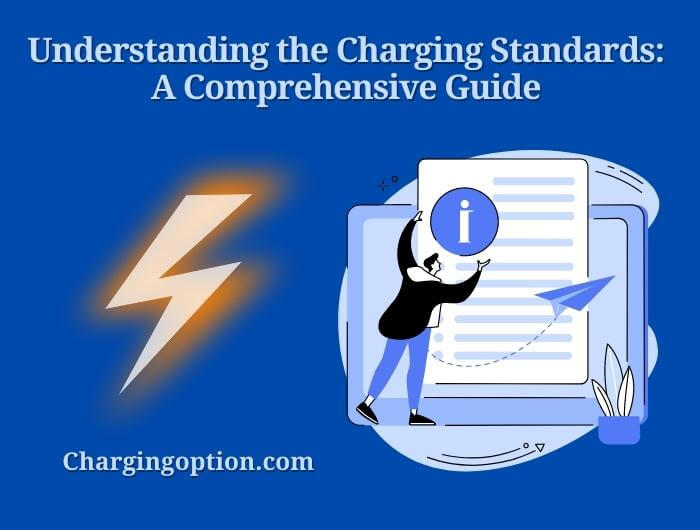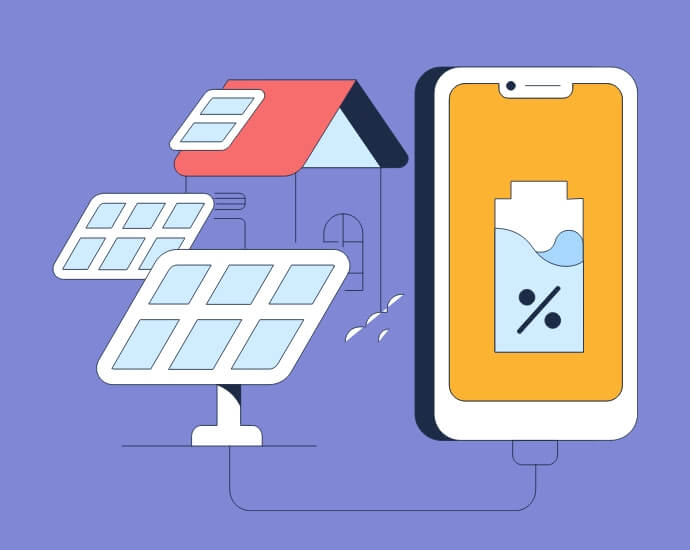Charging Standards are the guidelines that ensure compatibility and safety in powering devices. From phones to electric vehicles, they play an integral role in our connected world.
With the rise of electric vehicles, international charging standards have become paramount. These standards ensure that EVs from different manufacturers can conveniently charge at various charging points across the globe. Europe, for instance, has made significant strides in setting EV charging standards that ensure seamless operations across its vast landscape.
Phones, too, rely on these norms. USB charging standards have seen a series of evolutions over the years, leading to faster, more efficient charging and ensuring that devices from various brands can use universal charging solutions. This universality reduces electronic waste and enhances user convenience.
In North America, the emphasis on creating a unified charging ecosystem has led to the establishment of its own standards. These are essential for ensuring that both local and imported EVs function harmoniously within the infrastructure. If one is keen on getting into the technical specifics, many documents, including EV charger specifications in pdf format, are available to provide in-depth insights.
To gain a deeper insight into the world of charging standards and their global impact, we invite you to read the detailed article below.

Charging Standards: Ensuring Compatibility in a Connected World
Ever found yourself in a situation where you’ve borrowed a charger only to realize it doesn’t fit? Or, tried charging your new electric car on a trip, and the charger felt like it’s from another planet? Yeah, it’s more common than you think. That’s why charging standards are such a big deal!
Background of Charging Standards
Historical Evolution
Back in the day, every device had its own unique charger. Picture a drawer filled with tangled cords for every gadget you own. Chaotic, right? As tech advanced, the need for a universal solution became evident. Enter charging standards.
Importance in Modern Times
Modern times are all about convenience. We want fast, efficient, and most importantly, compatible solutions. Charging standards make sure you don’t have to carry a backpack full of chargers everywhere you go.
Electric Vehicle (EV) Charging Standards
International Protocols for EVs
Electric cars are all the rage now, aren’t they? But what’s the point if you can’t charge them conveniently across borders? International standards make sure that your EV feels at home, no matter where you drive it.
Europe’s Approach to EV Charging
Europe, being the trendsetter, has come up with a unified system ensuring that an EV from France can be charged in Germany or Spain without any hitches.
North American Charging Standard
And let’s not forget North America. They’ve established a robust system that ensures both locally produced and imported EVs charge harmoniously.
Phone Charging Norms
USB Charging Evolutions
Remember the days of the tiny pin Nokia charger? Fast forward to today, we’ve seen the USB evolve from a bulky connector to sleek Type-C ports. All thanks to charging standards!
Proprietary vs. Universal Charging
Some brands, like Apple with its Lightning port, opt for their own unique style. But, imagine a world where every phone uses the same charger. Dreamy, right?
Charging Standards Across Various Devices
Laptops and Computers
It’s not just about phones and cars. Your trusty laptop or computer also benefits from these standards. Ever noticed how most laptops these days have similar charging ports?
Wearable Tech
Smartwatches, fitness bands, you name it. The last thing you’d want is a separate charger for each. Thankfully, standards have got our back here too!
Home Appliances
Even our fridges and washing machines are jumping on the bandwagon. And why not? Standardized charging makes life a breeze.
Safety Aspects of Charging Standards
Regulations and Guidelines
Think about it. We’re essentially plugging our valuable devices into electrical outlets. Safety is paramount! Standards ensure that charging is not just efficient but safe.
Ensuring Device Longevity
It’s not rocket science. If your device charges the way it’s meant to, it’s bound to last longer. So, those standards? They’re silently looking out for your device’s health.
Environmental Impact of Unified Charging
Reduction in Electronic Waste
One charger to rule them all means fewer chargers being produced. This translates to less electronic waste. Mother Earth sends her thanks!
Promoting Sustainable Practices
With unified standards, we’re also looking at reduced manufacturing emissions and more sustainable production practices.

Future Developments in Charging Standards
Wireless Charging Innovations
Isn’t it fascinating? Charging your devices without a single wire in sight! As tech advances, so do the standards, ensuring that tomorrow’s solutions are efficient and compatible.
Fast Charging Technologies
Who has the time to wait for hours while your device charges? Upcoming standards promise to make charging quicker than your coffee break!
Overview of EV Charging Standards by Region
| Region | Standard |
|---|---|
| Europe | Type 2 |
| North America | SAE J1772 |
| Asia-Pacific | CHAdeMO |
Adoption Rate of Universal vs. Proprietary Charging
Calculate Your Device Charging Efficiency
Ever wondered how efficient your charger really is? Input your device type and charging standard to find out!
Calculate Your Device Charging Efficiency
FAQs
What Is the USB-C Fast Charge Voltage?
The USB-C fast charge voltage typically operates at 5V, 9V, 12V, 15V, or 20V, depending on the device’s requirements and the power source’s capabilities. Different devices and chargers might support various voltage levels to optimize charging speed.
Why Does the EU Have Its Own EV Charging Standard?
The EU has its own EV charging standard to ensure compatibility and safety across all member states. This standardization ensures a consistent experience for users and promotes the adoption of electric vehicles throughout the European Union.
Can You List the Different EV Charging Station Plug Types?
Certainly! Common EV charging station plug types include Type 1 (J1772), Type 2 (Mennekes), CCS Combo 1, CCS Combo 2, and CHAdeMO. The availability and usage of these plug types vary by region and vehicle make.
Are There Multiple Types of EV Charging Connectors?
Yes, there are several types of EV charging connectors. Some of the main ones are Type 1, Type 2, CCS Combo, and CHAdeMO. Each type serves a different purpose and has varying compatibility with electric vehicle models.
Is There a Standard EV Charging Plug?
While there isn’t a single global standard, many regions have adopted specific standards. For instance, Type 2 (Mennekes) is widely accepted in Europe, while Type 1 (J1772) is prevalent in North America and parts of Asia.
How Do International Charging Standards for Electric Vehicles Vary?
International charging standards for electric vehicles differ mainly in plug types, voltage, and communication protocols. These variations arise from regional preferences, vehicle types, and historical developments in infrastructure.
Does the USA Have a Specific EV Charging Standard?
Yes, in the USA, the most common standard for EV charging is the J1772, also known as Type 1. Additionally, CHAdeMO and CCS Combo 1 are popular for fast charging. These standards ensure compatibility across various electric vehicle brands and charging station providers.
So, what’s the big deal with charging standards? Well, they’re the unsung heroes ensuring our tech-driven lives run smoothly. From phones to cars, they’re making sure you’re powered up and ready to go. The future? It’s looking bright, charged, and wonderfully standard!
You May Also Like:
- Your 2022 Kona Wireless Charger Isn’t Working: A Solution-Oriented Guide
- The Relationship Between Your Charger and Device
- Can I Leave My Wireless Charger Plugged In?
- Troubleshooting the Tesla Home Charger Blinking Red
- Solving Club Car ERIC Charger Problems: A Practical Approach
- Can You Charge Headphones With Phone Charger?
